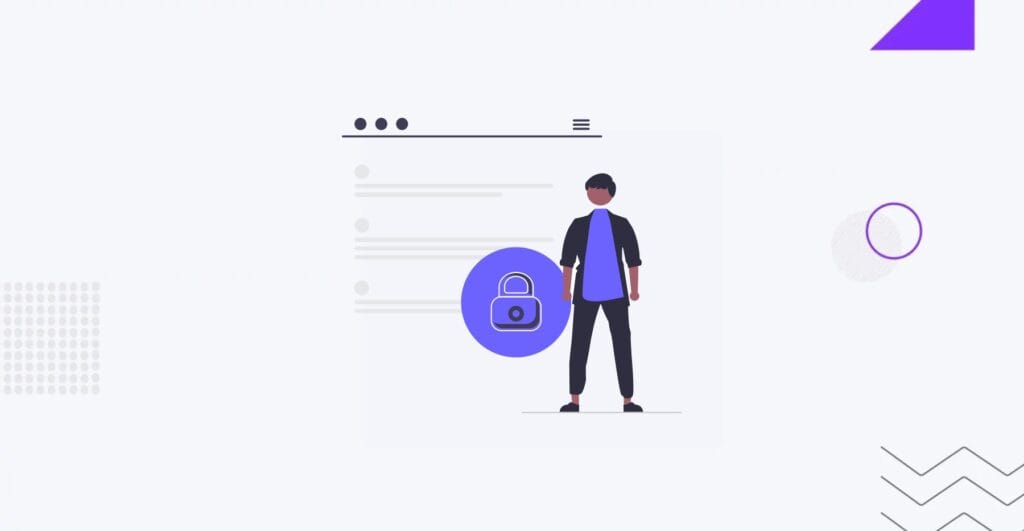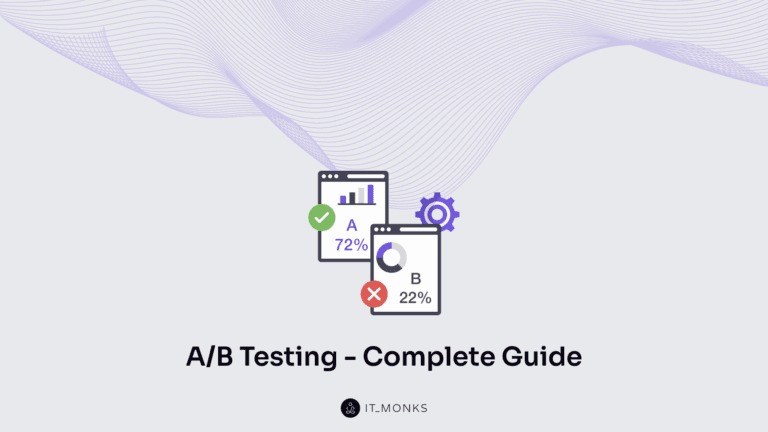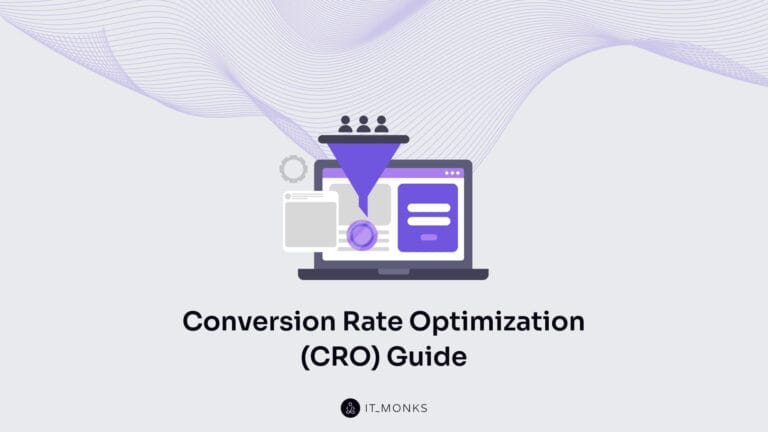What is Enterprise Security?
Table of Contents

Enterprise security is a range of processes, practices, technologies, and policies to protect digital data, servers, networks, people, and the operations of medium and large businesses against unauthorized access, data breaches, and cyber threats.
It goes beyond safeguarding IT and web environments and extends to physical, operational, and personnel security. However, the primary focus lies on web and IT security architecture, including cybersecurity and network protection, to ensure the integrity of systems, applications, and sensitive data.
Cybersecurity plays a vital role in enterprise security. It encompasses several key types, including network security to protect against unauthorized access, data security to safeguard sensitive information, email security to prevent phishing and spam attacks, and endpoint security to secure devices accessing the network.
Aligning various cybersecurity types with enterprise security best practices can help businesses establish a more resilient security posture. Enterprise security best practices include developing a security strategy and layered security measures, creating incident response plans, educating employees on security protocols, etc.
This article highlights enterprise security as a crucial aspect of the enterprise web development process. It delves into the types and best practices of enterprise security while examining the risks posed by insecure enterprise websites, providing your business with the insights and tools to address potential vulnerabilities.
Why is Enterprise Security Important?
Enterprise security is important because it protects digital assets — like customer data, intellectual property, financial records, and communication systems — and operational assets, including hardware devices, operational software, cloud services, and any physical or digital components, from cyber threats.
It ensures uninterrupted operations by minimizing risks like data theft, system downtime, and cyberattacks, maintaining productivity and business continuity, and enhancing customer trust by protecting sensitive information, fostering stronger relationships, and building credibility.
Everything mentioned above is rooted in Enterprise Security Architecture (ESA) principles, crafted through the web development process to ensure seamless integration of security protocols into digital systems.
What is Enterprise Security Architecture (ESA)?
Enterprise Security Architecture (ESA) is the strategic framework that defines how security measures are designed, implemented, and managed across an organization’s IT and operational systems.
It focuses on access control, data protection, threat detection, and response mechanisms, ensuring that security is not an afterthought but an integral part of systems and processes. By defining clear guidelines, ESA helps organizations implement consistent security practices across their networks, applications, and endpoints.
ESA helps businesses prevent breaches, reduce vulnerabilities, and maintain compliance with regulations. Well-known policies and procedures tied to ESA include the Zero Trust model, which emphasizes strict access control, and the NIST Cybersecurity Framework, which outlines best practices for identifying and mitigating risks.
Enterprise Security Management
Enterprise security management systematically coordinates an organization’s security processes, policies, and technologies. It ensures that all security aspects, from protecting networks to securing sensitive data, are aligned with business objectives and evolving threats.
In the context of the broader enterprise security system, its role is to implement the principles defined by enterprise security architecture (ESA), translating high-level frameworks into actionable measures.
For developers, this means working within a structured environment where security requirements are clearly defined, ensuring that applications and systems are designed with compliance and resilience.
Enterprise security management allows businesses to identify vulnerabilities early, respond effectively to incidents, and minimize disruptions. This is especially important in the development process, where integrating security management ensures secure coding practices, vulnerability assessments, and alignment with standards such as ISO/IEC 27001 and GDPR compliance.
Enterprise Cybersecurity

Enterprise cybersecurity is a set of practices, technologies, and policies to protect an organization’s information systems, networks, and data from cyber threats. It focuses on protecting digital assets, systems, and data from cyber threats and attacks.
As a core element of enterprise security, it integrates specialized security types to ensure comprehensive protection across networks, data, applications, and devices. These specialized security areas — such as network security, data security, cloud security, and more — work together to create a unified defense against evolving cyber threats.
Now, let’s discuss the key areas of enterprise cybersecurity in detail.
Network Security
Network security is the framework of policies, practices, and technologies designed to safeguard an organization’s network and data from unauthorized access, cyber threats, and breaches. Its primary focus is ensuring that only authorized users and devices can access the network while maintaining the confidentiality and integrity of data during transmission.
Tools like firewalls, intrusion detection systems (IDS), and intrusion prevention systems (IPS) play a pivotal role in monitoring network traffic, detecting vulnerabilities, and preventing malicious activities.
This security type addresses malware, Denial of Service (DoS) attacks, and unauthorized access. Its scope extends from securing the network perimeter to implementing internal protections like segmentation to isolate sensitive areas and reduce risk exposure.
Developers collaborate with network security teams to ensure applications resist these threats by utilizing secure communication protocols, encryption, and robust authentication methods.
Enterprise-level network security often incorporates real-time monitoring and proactive incident response planning, providing a layer of resilience and ensuring compliance with standards like GDPR, HIPAA, and PCI DSS.
As we move forward, we’ll examine data security, explicitly safeguarding sensitive information and ensuring access is restricted to authorized parties.
Data Security
Data security is the practice of protecting an organization’s most valuable asset: its data. The primary concern in data security is preventing unauthorized access, ensuring data integrity, and maintaining the confidentiality of sensitive information.
For developers, this means incorporating protective measures into every data lifecycle stage, from collection to storage and sharing.
Encryption plays a central role in safeguarding information at rest and in transit. Developers often rely on advanced encryption standards (AES) to encode sensitive data, ensuring that even if unauthorized parties intercept it, they cannot read it.
Authentication mechanisms, such as multi-factor authentication (MFA), are also key to restricting access. At the same time, data masking helps protect sensitive elements of the data by obfuscating it during processing or testing.
Data security protects against various threats, including data breaches, accidental data loss, and insider threats. These risks are often amplified by vulnerabilities in storage systems or weak authentication methods. The scope of data security is broad, covering databases, files, cloud environments, and even data transferred over networks.
Ensuring data remains secure throughout its journey — from the moment it is created until it is archived or deleted — is a crucial responsibility of security professionals and developers.
From here, we can transition to cloud security, which is becoming increasingly relevant as businesses move data and applications to the cloud.
Cloud Security
Cloud security is the practice of safeguarding data, applications, and services stored in cloud environments from unauthorized access, breaches, and cyber threats.
Cloud security focuses on securing the cloud architecture itself, ensuring data stored in the cloud is protected from unauthorized access, and guaranteeing the availability and integrity of cloud-based services.
A developer’s role in cloud security often involves implementing secure APIs, managing identity and access controls, and ensuring that cloud-based applications are built with security in mind.
Tools like encryption for data at rest and in transit and security information and event management (SIEM) systems play a key role in protecting cloud environments.
Cloud security addresses a range of threats, including unauthorized access, data breaches, and potential vulnerabilities in third-party services. It also mitigates risks posed by shared environments where multiple organizations may be using the same cloud infrastructure, ensuring that one tenant’s data does not become accessible to others.
Cloud security extends beyond the infrastructure and applications hosted on the cloud, including data storage, cloud networking, and access controls for internal and external users.
Email Security
Email security is the practice of protecting email communications from unauthorized access, phishing attacks, malware, and other cyber threats. As one of the most widely used communication channels in business, email security is crucial for safeguarding sensitive information and ensuring that internal and external communications remain private and secure.
Email security focuses on identifying and preventing malicious attempts to compromise email systems. This includes protecting against phishing attacks, which often deceive recipients into disclosing personal or sensitive information, and malware attachments that could infect the network.
Developers implement secure email protocols, such as Secure/Multipurpose Internet Mail Extensions (S/MIME) and Transport Layer Security (TLS), which encrypt email content and prevent unauthorized interception.
Email security addresses several threats, including phishing, spear-phishing, email spoofing, and malware-infected attachments. If not properly mitigated, these threats can lead to significant data breaches or system compromises.
The scope of email security is wide, covering not only the security of individual inboxes but also email servers, communication channels, and email storage systems. With proper security measures, developers can ensure that email remains a safe and reliable tool for business communication.
Endpoint Security
Endpoint security is the practice of protecting devices such as laptops, desktops, smartphones, and tablets from security breaches, malware, and cyberattacks to ensure their safety. As more organizations embrace remote and hybrid work environments, securing these endpoints becomes a primary concern.
The primary focus of endpoint security is to prevent unauthorized access to organizational networks through endpoints, which are often the entry points for cyberattacks. This involves ensuring that each device used to access company resources is properly secured, monitored, and managed.
Developers are responsible for ensuring that the software running on these devices is regularly updated and is designed to withstand potential vulnerabilities. Key tools in endpoint security include antivirus software, endpoint detection and response (EDR) tools, and device management platforms that can remotely monitor and manage endpoint security.
Endpoint security addresses several major threats, including malware infections, ransomware attacks, and unauthorized access to corporate data. The scope of endpoint security covers everything from ensuring device configurations are secure, and maintaining up-to-date patches to encrypting sensitive data stored on these devices.
Mobile Security
Mobile security is the practice of protecting mobile devices, such as smartphones and tablets, from various cyber threats. Mobile security covers device protection, app security, data encryption, secure Wi-Fi usage, and ensuring that devices are not exposed to vulnerabilities through outdated software or insecure network connections.
Mobile devices are used to access corporate networks, and if not properly secured, they can become potential entry points for cyberattacks.
Developers help protect mobile applications by implementing secure coding practices, encrypting sensitive data, and integrating authentication protocols to ensure that only authorized users can access the device and its data.
Key tools in mobile security include mobile device management (MDM) systems, mobile application security testing platforms, and mobile threat defense tools that detect and block malicious activities.
Mobile security addresses a variety of threats, including data breaches, malware infections, phishing attacks, and device theft. These threats increasingly target mobile devices, as they often need to be more secure than desktop systems.
Protecting against these threats involves securing both the devices and the applications running on them and ensuring that data transmitted via mobile apps is encrypted.
Application Security
Application security is the practice of protecting software applications from external threats and vulnerabilities to maintain their functionality, data integrity, and overall security. In the development process, security must be integrated from the beginning, with secure coding practices and continuous vulnerability assessments built into every stage of development.
Application security’s primary focus is safeguarding applications from malicious attacks that may target their source code, databases, or user interfaces. This includes preventing vulnerabilities like SQL injection, cross-site scripting (XSS), and buffer overflow attacks.
Developers help secure applications by directly embedding encryption, input validation, and authentication mechanisms into the code.
Tools like static application security testing (SAST), dynamic application security testing (DAST), and interactive application security testing (IAST) allow developers to detect vulnerabilities during the coding and testing phases, reducing the risk of breaches after deployment.
Application security addresses several critical threats, including unauthorized access, data breaches, and malware injection.
A compromised application can expose sensitive customer information, financial data, and intellectual property. Additionally, applications that are not securely developed may provide an entry point for attackers to exploit and move laterally within a network.
Application security encompasses protecting not only the application code itself but also the surrounding ecosystem, including databases, APIs, and the environment in which the application operates. This means securing everything from the development pipeline to the live application in production.
Since we’ve discussed the major enterprise security types, let’s proceed with enterprise security best practices.
Enterprise Security Best Practices

To ensure robust protection against evolving threats, businesses must adopt comprehensive enterprise security best practices. These practices range from developing a solid security strategy and implementing multiple security layers to managing identities and access effectively.
A strong response plan is essential for handling incidents, while continuous user activity monitoring helps detect potential risks early. Third-party risk management ensures that external partners maintain the same security standards, and educating employees on security best practices fosters a culture of vigilance across the organization.
These practices form the foundation for a proactive and resilient security framework. Let’s discuss them in more detail.
Develop a Security Strategy
A well-defined security strategy is the cornerstone of any successful enterprise security framework. It outlines an organization’s approach to protecting its digital infrastructure, data, and assets from internal and external threats.
For developers, a security strategy provides clear guidelines on implementing secure coding practices, securing databases, and integrating various security measures into the development process. By considering the security landscape from the start, developers can prevent vulnerabilities before they become exploitable.
This strategy is crucial because it offers a proactive approach to security. Instead of reacting to threats, organizations can anticipate potential risks and address them through prevention, detection, and response plans.
The benefits include minimizing data breaches, safeguarding intellectual property, and reducing the risk of costly disruptions. A comprehensive security strategy also aligns with regulatory standards, ensuring compliance and avoiding legal repercussions.
Tools like risk assessment frameworks, security audits, and threat modeling can be employed to develop a robust security strategy. Industry standards such as ISO/IEC 27001, NIST, and SOC 2 provide guidelines for setting up an effective security program.
Developers can also leverage certificates like Secure Sockets Layer (SSL) and Public Key Infrastructure (PKI) to enhance security within their applications and platforms.
With a security strategy in place, another step is implementing security layers to fortify the system further. Let’s explore how these layers create a resilient security posture.
Implement Security Layers
Implementing multiple layers of security, often referred to as “defense in depth,” is an essential best practice to safeguard against a wide range of threats. For developers, it means incorporating various security measures at every application and infrastructure development stage.
Each layer adds a barrier to prevent unauthorized access, detect malicious activity, and mitigate potential risks. This multi-layered approach ensures that others will protect the system even if one layer is compromised.
The importance of security layers lies in their ability to provide redundancy and comprehensive coverage. Developers can address different attack vectors by layering security measures, such as network intrusions, application vulnerabilities, and data breaches.
It also ensures that if a breach occurs, the impact is minimized, and the system can respond quickly to contain the damage.
Security layers can improve resilience against cyberattacks, protect sensitive data, and improve overall security posture. Each layer can be customized to the enterprise’s needs, providing flexibility and scalability as the business grows.
Key tools and technologies for implementing security layers include firewalls, intrusion detection systems (IDS), intrusion prevention systems (IPS), and data encryption, all of which form the backbone of effective protection against unauthorized access and attacks.
Complementing these tools, standards such as the CIS Controls, ISO/IEC 27001, and the NIST Cybersecurity Framework offer structured guidelines for establishing and maintaining these essential security layers.
Further enhancing this strategy, certificates like SSL/TLS ensure secure communication channels, while multi-factor authentication (MFA) strengthens access control mechanisms, creating a comprehensive and robust layered security approach.
With security layers in place, one more practice to focus on is Identity and Access Management (IAM), which ensures that only authorized users can access critical resources.
Identity and Access Management (IAM)
Identity and Access Management (IAM) is a security practice that ensures that only authorized individuals can access specific systems, applications, and data within an organization. IAM is integrated into the development process so that developers can provide role-based access controls, user authentication, and secure authorization mechanisms.
IAM is important because it helps minimize the risk of unauthorized access to sensitive data and systems, which can lead to data breaches or insider threats.
For any organization, especially those dealing with large volumes of personal or financial data, IAM is crucial in maintaining compliance with regulations like GDPR, HIPAA, and others that mandate strict access control measures.
The benefits of IAM include improved security by ensuring that only authenticated users can access sensitive data, streamlined user management, and easier auditing of access patterns.
Additionally, IAM reduces the complexity of managing user credentials, enhances operational efficiency, and enforces strong password policies, multi-factor authentication (MFA), and least-privilege access principles.
Tools like Microsoft Azure Active Directory, Okta, and AWS Identity and Access Management (IAM) are commonly used to manage identities and enforce access controls, ensuring only authorized individuals can access sensitive resources.
These tools are further supported by standards like OAuth2, SAML, and OpenID Connect, which establish secure authentication and authorization protocols critical for maintaining system integrity.
To strengthen these efforts, multi-factor authentication (MFA) certificates add an additional layer of security, providing robust protection against unauthorized access and potential breaches.
With a strong IAM system, an organization is better equipped to respond to potential security incidents. Now, let’s look at how to build an effective response plan to address any security breaches or incidents.
Build Response Plan
A response plan is a critical practice in enterprise security, focusing on preparing an organization to react effectively to security incidents, breaches, or attacks.
For developers, having a well-defined incident response (IR) plan means understanding how to quickly isolate affected systems, preserve evidence for forensic analysis, and minimize downtime. This plan involves pre-established protocols, clear roles, and tools that guide the response process.
A response plan ensures that an organization can swiftly and efficiently address potential security incidents, reducing damage and restoring operations. Without a response plan, organizations risk chaotic reactions to breaches, leading to increased vulnerabilities, data loss, and reputational damage.
For developers, the response plan must incorporate guidelines for handling security vulnerabilities in code or infrastructure, allowing teams to patch and mitigate issues rapidly.
The primary benefit of a well-executed Response Plan is the ability to minimize the impact of security incidents. By following a structured and practiced approach, businesses can reduce recovery time, limit the financial cost of breaches, and safeguard their data.
A response plan also helps businesses comply with regulations requiring immediate action in case of a breach, such as the GDPR’s breach notification rules.
Popular tools used to facilitate response plans include Splunk for security information and event management (SIEM), which provides real-time insights into security events, and incident management tools like PagerDuty and ServiceNow, which streamline the coordination of response activities.
These tools are complemented by security standards such as NIST’s Computer Security Incident Handling Guide and ISO/IEC 27035, which offer structured guidelines for establishing effective response protocols.
To ensure that teams can effectively implement these protocols, certifications like Certified Incident Handler (GCIH) equip security professionals with the expertise needed to manage and mitigate incidents efficiently.
Now that we have explored how to build an effective response plan, let’s move on to monitoring user activity, which is essential for detecting and preventing malicious behavior before it escalates.
Monitoring User Activity
Monitoring user activity is a critical enterprise security practice that involves tracking and analyzing user behavior within an organization’s network, systems, and applications. This process helps identify abnormal or unauthorized activities, detect potential threats, and ensure that sensitive data and resources are accessed and used appropriately.
Monitoring user activity is important to identify suspicious behaviors early, which could indicate insider threats, compromised accounts, or data breaches.
By continuously monitoring and analyzing user interactions, developers can quickly detect anomalies such as unauthorized access attempts, data exfiltration, or privilege escalation.
Additionally, it helps ensure compliance with security policies and regulations that require monitoring of access to sensitive information, such as GDPR and HIPAA.
One key benefit of monitoring user activity is detecting and responding to threats before they cause significant damage.
Early detection allows organizations to take immediate action, such as locking accounts, blocking suspicious IP addresses, or alerting security teams to investigate further. This proactive approach helps minimize potential harm, whether it’s data loss, financial cost, or reputational damage.
Tools like Splunk, Datadog, and SolarWinds provide comprehensive user activity monitoring capabilities, enabling businesses to track events, log behaviors, and generate alerts for suspicious activities, ensuring proactive security measures.
Security Information and Event Management (SIEM) platforms such as IBM QRadar and LogRhythm are complemented by these tools, which not only aggregate and analyze data but also facilitate real-time responses to security incidents.
To ensure that security professionals effectively leverage these tools and platforms, certifications like Certified Information Systems Auditor (CISA) and Certified Information Security Manager (CISM) equip them with the knowledge and expertise needed to adhere to monitoring best practices.
Having discussed the importance of user activity monitoring, let’s now focus on managing third-party risks. If not properly assessed and managed, third-party risks can present significant vulnerabilities.
Third-Party Risk Management
Third-party risk management refers to identifying, assessing, and mitigating risks arising from partnerships or contracts with external vendors, suppliers, contractors, and other third parties accessing an organization’s data, systems, or infrastructure.
This practice is essential for developers as it ensures that any third-party software, services, or APIs integrated into the company’s systems meet the required security standards and are properly monitored.
This practice is crucial because third parties often introduce risks that can impact an organization’s security posture.
These risks can range from compromised data access to vulnerabilities in external software. Since many third-party services are deeply integrated into a company’s systems, any weaknesses in their security can lead to breaches, data theft, or disruptions in business operations.
For developers, it means working closely with third parties to establish secure communication channels and ensuring that APIs and other integrated systems resist attacks.
One key benefit of third-party risk management is that it helps protect the organization from external threats. Companies can prevent introducing insecure software or systems into their environment by carefully vetting and continuously assessing third-party vendors.
Additionally, it ensures that third-party partners comply with regulatory requirements, such as GDPR, which can help avoid legal or financial penalties.
Risk management platforms like RiskWatch, RSA Archer, and Prevalent can be used to assess and monitor third-party risks. These tools help automate risk assessments, provide vendor risk scoring, and allow for continuous monitoring of third-party activities.
For certifications, organizations often rely on standards such as ISO 27001, SOC 2, or NIST 800-53 to ensure third-party partners adhere to robust security practices.
Now that we’ve explored the significance of managing third-party risks let’s move on to another crucial aspect of enterprise security: educating employees about security practices.
Employees Security Education
Third-party risk management identifies, assesses, and mitigates risks arising from partnerships with external vendors, suppliers, contractors, or service providers who have access to your organization’s systems, networks, or data.
In the development context, third-party risk management ensures that all external services, software, and APIs integrated into a company’s infrastructure meet security standards and do not introduce vulnerabilities.
Developers play a critical role here by evaluating and securing any code, libraries, or platforms provided by third parties to ensure they don’t compromise the integrity of the organization’s systems.
The importance of third-party risk management lies in the fact that many organizations rely on external vendors for software, infrastructure, and services that are deeply integrated into their systems.
Any security lapse by a third-party vendor can expose the entire organization to threats, such as data breaches, security vulnerabilities, or disruptions to business operations.
Developers are also responsible for securing the communications between in-house systems and third-party services, such as ensuring secure API connections and implementing best practices for authentication and encryption.
One key benefit of effective third-party risk management is protecting the organization from external risks.
By carefully vetting third-party vendors and continuously assessing their security practices, you can ensure that insecure or vulnerable software is not integrated into your systems. This reduces the likelihood of data breaches, system failures, or legal issues.
Moreover, effective third-party risk management can help the organization meet regulatory requirements and industry standards, preventing costly penalties and protecting the company’s reputation.
From a developer’s perspective, third-party risk management can involve using tools such as static code analysis, software composition analysis, or security testing tools to evaluate the security posture of external libraries or services before integrating them into your codebase.
Platforms like SonarQube, Veracode, or OWASP Dependency-Check are widely used to scan third-party components for known vulnerabilities. Security standards like ISO/IEC 27001 for information security management and SOC 2 for service organization controls can be helpful when ensuring that third-party vendors adhere to robust security practices.
Additionally, using APIs with built-in security protocols like OAuth 2.0 or JWT can minimize the risks associated with third-party integrations.
Who is Responsible for Enterprise Security?

The Chief Information Security Officer (CISO) and the Security Operations Center (SOC) team share responsibility for enterprise security. The CISO drives the security strategy and ensures its execution, while the SOC team actively monitors and responds to threats in real-time.
IT and network security professionals play a vital role by safeguarding the network infrastructure, ensuring that only authorized users and devices have access, thus creating a secure foundation for enterprise operations.
Web developers, on the other hand, contribute by building and maintaining secure applications, embedding best practices to defend against vulnerabilities like SQL injection and XSS.
System administrators also join the effort by managing the company’s servers and systems, ensuring they are securely configured and regularly patched to mitigate potential risks. Security architects further strengthen this ecosystem by designing the organization’s security infrastructure, seamlessly integrating protective measures that align with operational needs.
Adding another layer of protection, compliance and risk management teams work to ensure adherence to legal and regulatory standards, reducing the risk of non-compliance penalties. Meanwhile, employees, trained to recognize and report potential threats, act as the first line of defense, bridging human awareness with technical safeguards.
Together, all these roles, including web developers, form an interconnected system that guards against evolving cyber threats and ensures a secure enterprise environment.
Does Enterprise Web Development Include Security Service?
Yes, enterprise web development includes security services as a critical component of the development process.
Web developers are responsible for integrating security measures such as data encryption, secure coding practices, and vulnerability testing into the enterprise web development solutions they create. This ensures that sensitive data is protected and the application is resilient against cyber threats.
Security is not a separate function but an integral part of the web development lifecycle, with ongoing collaboration between developers and security teams to address potential risks and vulnerabilities.
Risks of Insecure Enterprise Website
Insecure enterprise websites face several risks that can lead to serious consequences. One of the main risks is data breaches, where unauthorized access to sensitive information, such as customer data or intellectual property, occurs, potentially leading to identity theft or financial losses.
Malware attacks are another risk, where malicious software is introduced to disrupt the website’s operation or steal data.
DDoS attacks (Distributed Denial of Service) overload the server with traffic, rendering the website inaccessible to legitimate users, and harming the company’s reputation and revenue.
Insecure hosting also poses risks, such as weak server security or outdated software, which can provide attackers with an entry point to exploit vulnerabilities.
Is My Hosting Provider Related to My Enterprise Website Security?
Yes, your hosting provider is closely related to your enterprise website security. They are responsible for the physical infrastructure, server configurations, and overall network security that supports your website.
The best enterprise wordpress hostings secure hosting provider will implement strong measures such as firewalls, encryption, and regular software updates to protect your data and minimize vulnerabilities. If your hosting provider uses outdated systems or has weak security protocols, your website becomes an easy target for cyberattacks.
Contact
Don't like forms?
Shoot us an email at [email protected]
Send a Project Brief
You need to load content from reCAPTCHA to submit the form. Please note that doing so will share data with third-party providers.
More InformationYou are currently viewing a placeholder content from Turnstile. To access the actual content, click the button below. Please note that doing so will share data with third-party providers.
More InformationYou are currently viewing a placeholder content from Facebook. To access the actual content, click the button below. Please note that doing so will share data with third-party providers.
More InformationYou are currently viewing a placeholder content from Instagram. To access the actual content, click the button below. Please note that doing so will share data with third-party providers.
More InformationYou are currently viewing a placeholder content from X. To access the actual content, click the button below. Please note that doing so will share data with third-party providers.
More Information


